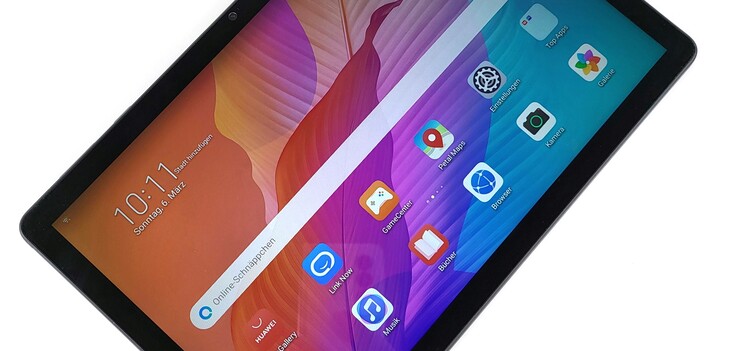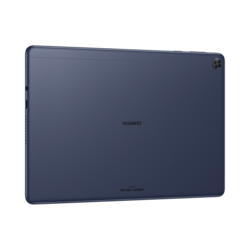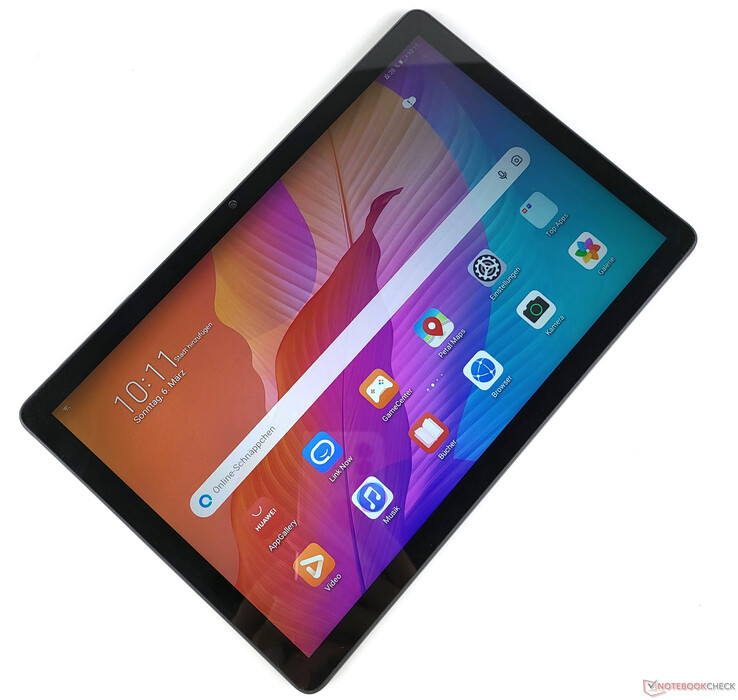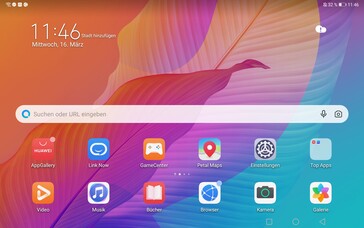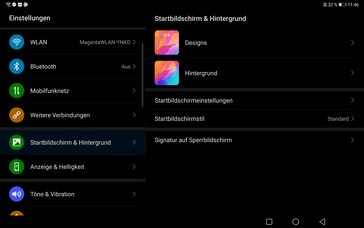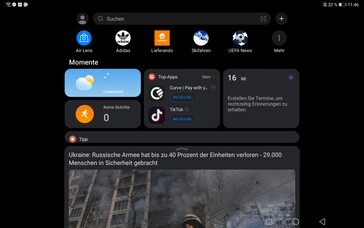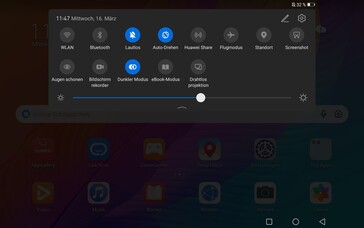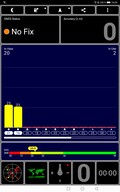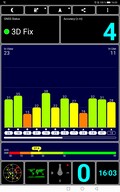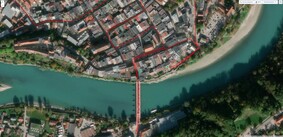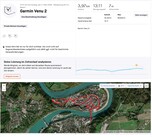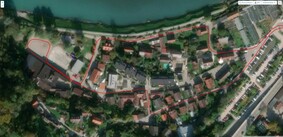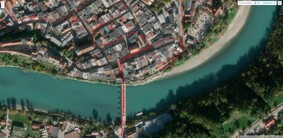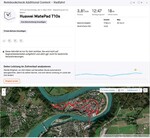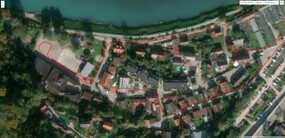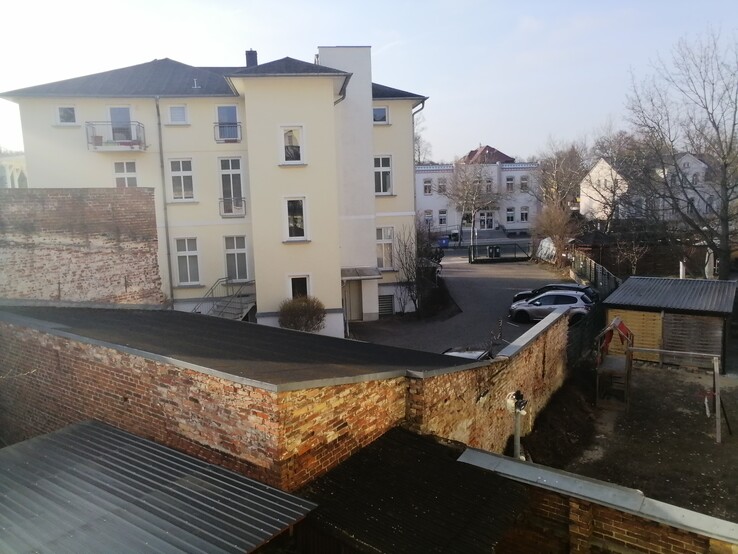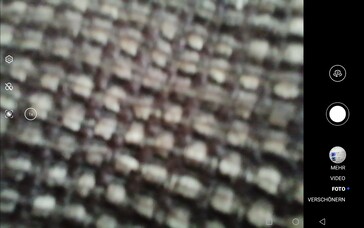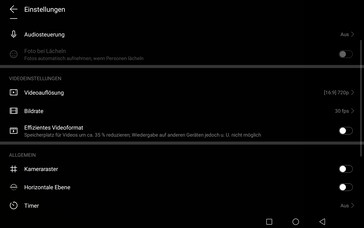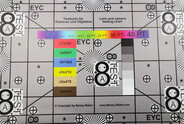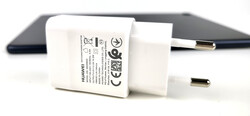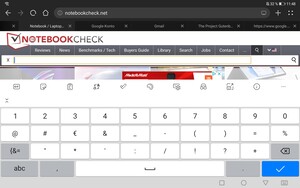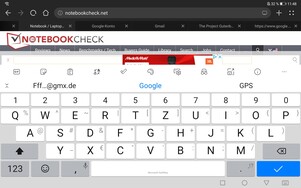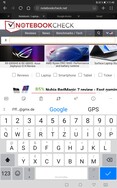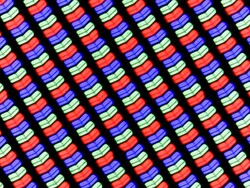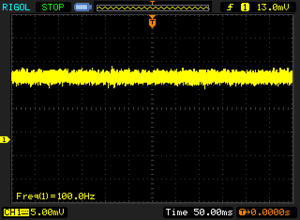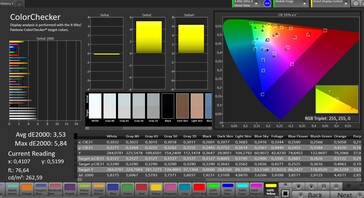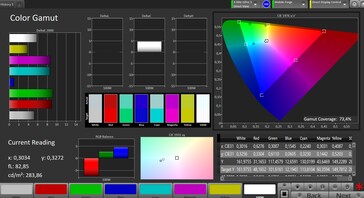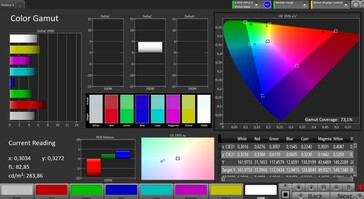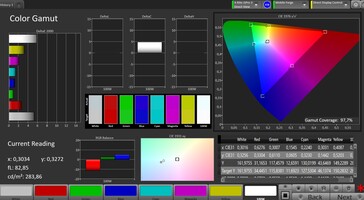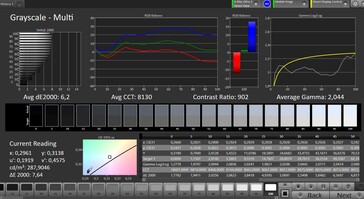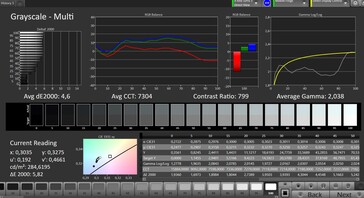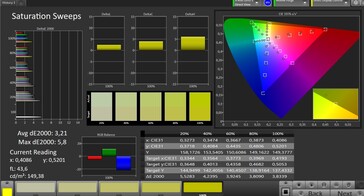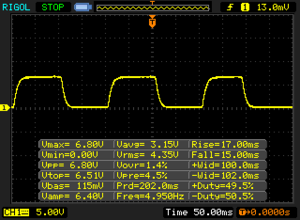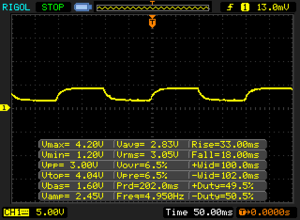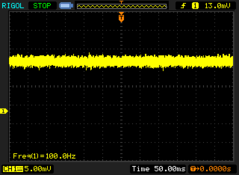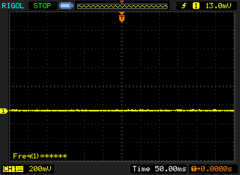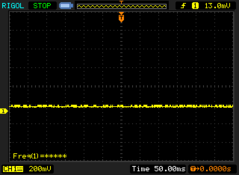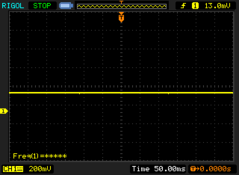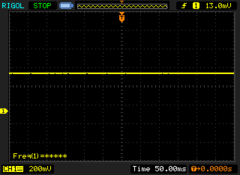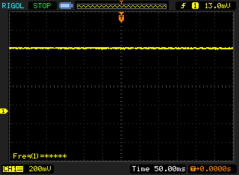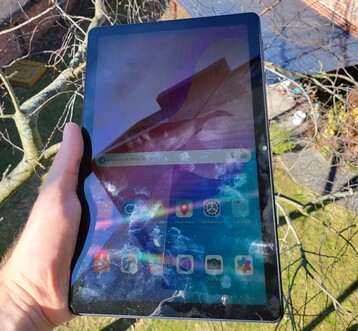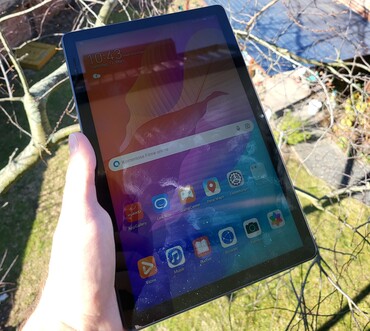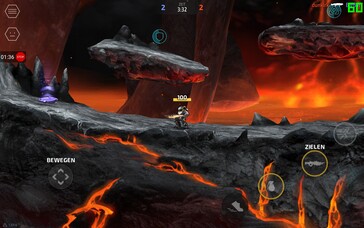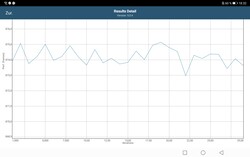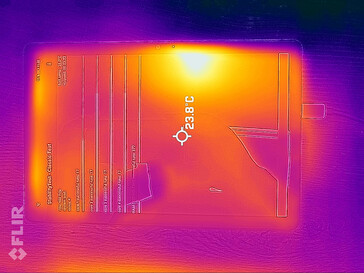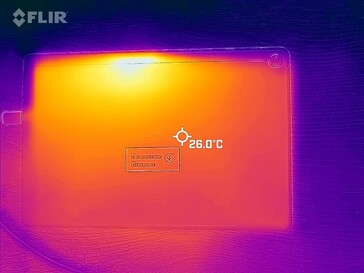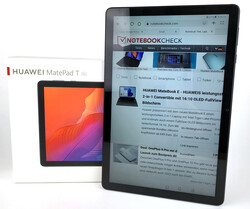Huawei MatePad T10s Review: Affordable tablet with large screen and Kids Corner
The MatePad T series is the entry point into Huawei's tablet world. The T10s model is based on a 10.1-inch IPS display with a resolution of 1,920 x 1,200 pixels. Due to the low MSRP of 179 Euros (~$179), the Chinese multimedia tablet only has 2 GB of working memory and 32 GB of flash storage in the basic version. However, the latter can be expanded via a micro-SD memory card.
One of the highlights of this multimedia tablet is the integrated stereo speakers, which have been optimized by Harmon Kardon. Beyond that, the Chinese manufacturer advertises a high performance thanks to the in-house HiSilicon Kirin 710A. We will take a closer look at whether the MatePad T10s lives up to these promises in everyday use and how the rather small 5,100 mAh battery performs in this review.
Possible competitors in comparison
Rating | Date | Model | Weight | Height | Size | Resolution | Price |
|---|---|---|---|---|---|---|---|
| 80.9 % v7 (old) | 04 / 2022 | Huawei MatePad T10S Kirin 710A, Mali-G51 MP4 | 450 g | 7.85 mm | 10.10" | 1920x1200 | |
| 80.5 % v7 (old) | 03 / 2022 | Teclast T40 Pro T618, Mali-G52 MP2 | 480 g | 9.2 mm | 10.36" | 2000x1200 | |
| 81 % v7 (old) | 02 / 2022 | Samsung Galaxy Tab A8 2022 T618, Mali-G52 MP2 | 508 g | 6.9 mm | 10.50" | 1920x1200 | |
| 84.1 % v7 (old) | 11 / 2021 | Lenovo Tab P11 Plus Helio G90T, Mali-G76 MP4 | 490 g | 7.5 mm | 11.00" | 2000x1200 | |
| 74.3 % v7 (old) | 09 / 2021 | Blackview Tab 10 Helio MT8768, PowerVR GE8320 | 523 g | 8.4 mm | 10.10" | 1920x1080 |
Case: Huawei tablet with wide edges
The 450 g-Huawei tablet is only available in a bluish color option. Visually, the MatePad T10s makes a high-quality impression in view of the low price, and the build quality is also on a good level for an entry-level tablet. The aluminum back fits ergonomically in the hand and fingerprints are not immediately visible due to the light matte finish.
The front is completely made of scratch-resistant display glass, which blends smoothly into the metal frame. The bezels around the IPS display are quite wide, which is also reflected in the 77% screen-to-body ratio.
Equipment: MatePad T10s with 3.5 mm jack
The MatePad T10s is available in both Wi-Fi and LTE versions. The entry-level variant with 32 GB of storage and 2 GB of RAM starts at 179 Euros (~$179), the 128 GB version with 4 GB of RAM costs 249 Euros (~$259), and Huawei charges 259 Euros (3 GB / 64 GB) for the tablet with LTE.
Our test device offers 64 GB of internal eMMC 5.1 storage (RRP: 219 Euros). There is still approximately 51 GB available for the user after deducting the space occupied by the OS. Users who need to expand their storage capacity can do so via microSD cards up to 512 GB.
The USB Type-C port on the tablet's bottom can also be used to read data from a USB stick such as videos, for example. However, a corresponding adapter is required, which is not included in the MatePad T10s. Of course, other peripherals, such as external keyboards, can also be connected via the port.
microSD card reader
The integrated microSD card slot supports the current SDHC and SDXC standards. The performance in the cross-platform disk test is convincing in combination with our reference Angelbird AV PRO V60 card. However, the MatePad T10s is quite slow with a copy speed of only 18 MB/s.
| SD Card Reader - average JPG Copy Test (av. of 3 runs) | |
| Samsung Galaxy Tab A8 2022 (Angelbird AV Pro V60) | |
| Lenovo Tab P11 Plus (Angelbird V60) | |
| Teclast T40 Pro (Angelbird AV Pro V60) | |
| Huawei MatePad T10S (Angelbird V60) | |
Cross Platform Disk Test (CPDT)
Software: Huawei tablet without GMS
Huawei relies on Android 10 as the operating system for its entry-level tablet, which is supplemented by a highly customized EMUI 10 user interface. Although the Android base is outdated, Huawei still provides the MatePad T10s with up-to-date security patches that were based on January 2022 at the time of testing.
As already known, the Chinese company's products do not support Google services, so most Google apps and many third-party apps that rely on Google Play Services do not work. It is not possible to install the Google Play Store without resorting to workarounds, but Huawei's AppGallery in conjunction with Petal Search and alternative app sources now offers a solid selection of apps.
Despite the Google waiver, the MatePad T10s does support Widevine Level L1 DRM. Huawei also integrates useful features like App Multiplier into the Android interface. Two windows of the same app are displayed simultaneously in landscape mode and the size of the windows can be configured individually, which is quite practical.
With Kids Corner, Huawei also aims at the Fire HD 10 tablet market, particularly the Kids Pro Edition. The application offers age-appropriate content and includes an eye comfort mode with optimized display effects to prevent eyestrain in children.
Communication and GNSS: MatePad T10s with GPS
Bluetooth 5.0 is available for wireless communication, but an NFC chip is not installed. The integrated Wi-Fi module supports the IEEE 802.11 standard a/b/g/n/ac, and thus operates in the 2.4 GHz and 5 GHz frequency ranges
The transmission speed between the inexpensive Huawei tablet and our reference Asus ROG Rapture GT-AXE11000 router is on a somewhat poor level. However, the average data transfer rates of over 200 Mbps should only be limiting for very few users due to bandwidth constraints of local internet contracts in general. That being said, the MatePad T10s is certainly not very future-proof.
A probable field of application for a large tablet is video telephony. We looked at the voice quality of the built-in microphone with the Skype app. The voice reproduction with the MatePad T10s is sufficiently loud and our conversation partners can be understood well. However, audio reproduction via built-in speakers is mixed with reverberation and sometimes difficult to understand.
| Networking | |
| iperf3 transmit AX12 | |
| Lenovo Tab P11 Plus | |
| Blackview Tab 10 | |
| iperf3 receive AX12 | |
| Blackview Tab 10 | |
| Lenovo Tab P11 Plus | |
| iperf3 transmit AXE11000 | |
| Samsung Galaxy Tab A8 2022 | |
| Teclast T40 Pro | |
| Huawei MatePad T10S | |
| iperf3 receive AXE11000 | |
| Samsung Galaxy Tab A8 2022 | |
| Teclast T40 Pro | |
| Huawei MatePad T10S | |
The MatePad T10s uses GPS, BeiDou and Glonass satellite networks for positioning. Outdoor positioning shows good accuracy, but the positioning itself takes quite a long time and is below average with an SNR value of less than 30. A satellite fix indoors is not possible with the entry-level tablet.
We also check the positioning accuracy on a 4 km bike ride and compare the results with the Garmin Venu 2s smartwatch. When analyzing the tablet's route, we always see that there are always bigger deviations from our route. Navigation with a car is definitely possible with the MatePad T10s, but the positioning quality is not beyond doubt. It is possible that the LTE version with A-GPS support could score better than our Wi-Fi version in terms of positioning.
Cameras: Huawei tablet with a single rear cam
A 2 MP front-facing camera with an f/2.4 aperture is located in the display's upper frame. Photo quality is on a low level. Details are hardly present and the colors look very pale.
A 5 MP single camera with an f/2.2 aperture is installed on the back. Sharpness and picture detail are slightly better in bright light than with the front-facing camera, but these photos also lack sharpness overall. Colors are reproduced much more appealingly, though.
In order to evaluate the color reproduction as objectively as possible, we take additional photos with the MatePad T10s in artificial light with the help of the X-Rite ColorChecker Passport. Colors are recorded quite faithfully here as well.
Huawei's tablet records videos with a resolution of up to 1080p. Only HD recordings are possible with the front-facing camera.
Image comparison
Choose a scene and navigate within the first image. One click changes the position on touchscreens. One click on the zoomed-in image opens the original in a new window. The first image shows the scaled photograph of the test device.
Motiv 1 - TagMotiv 2 - TagLow Light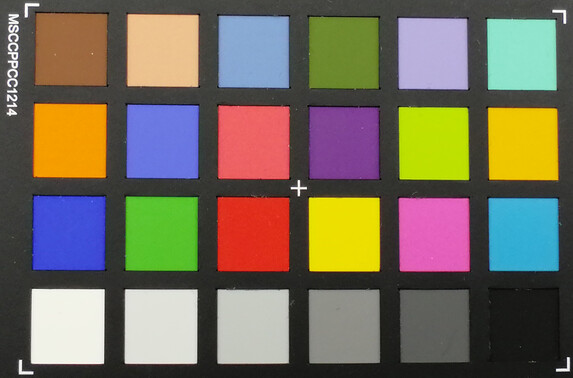

Accessories and warranty: Huawei tablet with power adapter
The MatePad T10s comes with a modular charger, a USB-C cable, an ejector tool, as well as a quick-start guide and a warranty card. The in-house online store also offers optional accessories, such as a protective case, for the tablet.
The warranty is for 24 months and its status can be easily viewed in the service app.
Input devices and operation: MatePad T10s with FaceUnlock
Huawei's MatePad T10s has a capacitive touchscreen with convincing gliding with nothing to complain about in terms of precision. Our inputs with the fingers are accurately recognized by Huawei's tablet.
A 2D face recognition is available for biometric security. The recognition is quite fast; a fingerprint sensor is not available.
Display: Huawei tablet with LCD
The display of the Huawei MatePad T10s measures 10.1 inches diagonally in a 16:10 format. The IPS display has a Full HD resolution of 1,920 x 1,080 pixels. The achieved pixel density of just under 224 PPI is not very high. Furthermore, the "smart resolution" is preset ex-factory, which often leads to a reduction of content to 720p. To avoid a blurry display, users should adjust this during the initial setup because a fixed 1080p resolution is noticeably better.
The screen's maximum brightness is just 285 cd/m². The more realistic APL50 measurement, which simulates an even distribution of bright and dark areas on the panel, shows near-identical 306 cd/m². Although the inexpensive tablet competition does not offer bright displays either, the luminance of the MatePad T10s is low even in this price range and borderline in bright indoor environments.
For brightness control, the tablet's display uses PWM-like flickering with a 100 Hz frequency below 15% of the maximum brightness. However, this is not a classic PWM flickering like in OLEDs.
| |||||||||||||||||||||||||
Brightness Distribution: 91 %
Center on Battery: 285 cd/m²
Contrast: 950:1 (Black: 0.3 cd/m²)
ΔE ColorChecker Calman: 3.53 | ∀{0.5-29.43 Ø4.77}
ΔE Greyscale Calman: 6.2 | ∀{0.09-98 Ø5}
97.7% sRGB (Calman 2D)
Gamma: 2.044
CCT: 8130 K
| Huawei MatePad T10S LCD IPS, 1920x1200, 10.1" | Teclast T40 Pro IPS, 2000x1200, 10.4" | Samsung Galaxy Tab A8 2022 TFT-LCD, 1920x1200, 10.5" | Lenovo Tab P11 Plus IPS, 2000x1200, 11" | Blackview Tab 10 IPS, 1920x1080, 10.1" | |
|---|---|---|---|---|---|
| Screen | 6% | -38% | 9% | -54% | |
| Brightness middle (cd/m²) | 285 | 433 52% | 368 29% | 410 44% | 467 64% |
| Brightness (cd/m²) | 282 | 412 46% | 346 23% | 400 42% | 445 58% |
| Brightness Distribution (%) | 91 | 86 -5% | 91 0% | 83 -9% | 89 -2% |
| Black Level * (cd/m²) | 0.3 | 0.48 -60% | 0.61 -103% | 0.29 3% | 0.66 -120% |
| Contrast (:1) | 950 | 902 -5% | 603 -37% | 1414 49% | 708 -25% |
| Colorchecker dE 2000 * | 3.53 | 3 15% | 6.9 -95% | 4.47 -27% | 9.9 -180% |
| Colorchecker dE 2000 max. * | 5.84 | 7.2 -23% | 11.4 -95% | 8.84 -51% | 15.66 -168% |
| Greyscale dE 2000 * | 6.2 | 4.4 29% | 7.7 -24% | 5.1 18% | 9.9 -60% |
| Gamma | 2.044 108% | 2.12 104% | 2.16 102% | 2.248 98% | 1.72 128% |
| CCT | 8130 80% | 7003 93% | 8547 76% | 7966 82% | 9142 71% |
* ... smaller is better
Screen Flickering / PWM (Pulse-Width Modulation)
| Screen flickering / PWM detected | 100 Hz | ≤ 15 % brightness setting | |
The display backlight flickers at 100 Hz (worst case, e.g., utilizing PWM) Flickering detected at a brightness setting of 15 % and below. There should be no flickering or PWM above this brightness setting. The frequency of 100 Hz is very low, so the flickering may cause eyestrain and headaches after extended use. In comparison: 53 % of all tested devices do not use PWM to dim the display. If PWM was detected, an average of 8084 (minimum: 5 - maximum: 343500) Hz was measured. | |||
The rather mixed impressions of the display continue with the low contrast of less than 1000:1. The black value of 0.3 cd/m² is on a good level for an IPS panel, but the low brightness spoils a more contrasting display.
In combination with the ClariVu display technology, content should be brought to life in brilliant colors but our measured DeltaE deviations are not in the ideal range (<3). However, the color accuracy as well as the accuracy of the displayed grayscale levels are okay for the price range in the "Warm" profile. In return, the sRGB color space coverage and color temperature are less than ideal. The latter leads to a slightly turquoise-bluish color cast in the display content.
Display Response Times
| ↔ Response Time Black to White | ||
|---|---|---|
| 32 ms ... rise ↗ and fall ↘ combined | ↗ 17 ms rise | |
| ↘ 15 ms fall | ||
| The screen shows slow response rates in our tests and will be unsatisfactory for gamers. In comparison, all tested devices range from 0.1 (minimum) to 240 (maximum) ms. » 85 % of all devices are better. This means that the measured response time is worse than the average of all tested devices (20.2 ms). | ||
| ↔ Response Time 50% Grey to 80% Grey | ||
| 51 ms ... rise ↗ and fall ↘ combined | ↗ 33 ms rise | |
| ↘ 18 ms fall | ||
| The screen shows slow response rates in our tests and will be unsatisfactory for gamers. In comparison, all tested devices range from 0.165 (minimum) to 636 (maximum) ms. » 87 % of all devices are better. This means that the measured response time is worse than the average of all tested devices (31.6 ms). | ||
The low contrast ratio coupled with low luminance makes for poor readability outdoors. Content is not legible in direct sunlight — the panel reaches its limits even without reflections. However, the luminance is sufficient for indoor use in most situations.
Thanks to the liquid crystal display with in-plane switching technology (IPS), content is displayed relatively true to color even at flat viewing angles. However, a brightness-drop is clearly perceptible when viewed from the side.
Performance: MatePad T10s with Kirin SoC
The HiSilicon Kirin 710A is an octa-core SoC that is based on the Kirin 710 but is manufactured in the 14nm FinFET process. Like the Kirin 960 and 970 the processor integrates four Cortex-A73 clocked at 2 GHz and four Cortex-A53 cores that clock with up to 1.7 GHz in the big.LITTLE configuration. The GPU is a low-performance Mali-G51 MP4.
System performance is at a low level due to the modest SoC. The MatePad T10s often shows lags, and scrolling in the browser sometimes feels choppy. Closing and opening applications also feels a bit sluggish. Even a Samsung Galaxy Tab A8 2022 with the not-often-seen UNISOC T618 offers significantly better system performance.
The Kirin SoC is clearly behind Samsung's competition in CPU benchmarks. A Lenovo Tab P11 Plus with the Mediatek Helio G90T almost plays in a league of its own — especially in the single-core area. A similar situation is seen in GFXBench graphics tests. Only the performance deficits of a PowerVR GE8320 in the Blackview Tab 10 are even more glaring.
The performance bottleneck of the MatePad T10s is not only the weak chipset — even the eMMC storage is slow, which leads to long loading times.
| GFXBench 3.0 | |
| on screen Manhattan Onscreen OGL | |
| Average of class Tablet (14 - 165, n=71, last 2 years) | |
| Lenovo Tab P11 Plus | |
| Samsung Galaxy Tab A8 2022 | |
| Teclast T40 Pro | |
| Huawei MatePad T10S | |
| Average HiSilicon Kirin 710A (15 - 20, n=3) | |
| 1920x1080 1080p Manhattan Offscreen | |
| Average of class Tablet (12 - 532, n=71, last 2 years) | |
| Lenovo Tab P11 Plus | |
| Huawei MatePad T10S | |
| Samsung Galaxy Tab A8 2022 | |
| Teclast T40 Pro | |
| Average HiSilicon Kirin 710A (19 - 28, n=3) | |
| GFXBench 3.1 | |
| on screen Manhattan ES 3.1 Onscreen | |
| Average of class Tablet (8.8 - 160, n=71, last 2 years) | |
| Lenovo Tab P11 Plus | |
| Samsung Galaxy Tab A8 2022 | |
| Teclast T40 Pro | |
| Huawei MatePad T10S | |
| Average HiSilicon Kirin 710A (7.9 - 14, n=3) | |
| 1920x1080 Manhattan ES 3.1 Offscreen | |
| Average of class Tablet (8.3 - 400, n=71, last 2 years) | |
| Lenovo Tab P11 Plus | |
| Huawei MatePad T10S | |
| Samsung Galaxy Tab A8 2022 | |
| Teclast T40 Pro | |
| Average HiSilicon Kirin 710A (13 - 16, n=3) | |
| Antutu v9 - Total Score | |
| Average of class Tablet (126757 - 1247557, n=14, last 2 years) | |
| Lenovo Tab P11 Plus | |
| Teclast T40 Pro | |
| Samsung Galaxy Tab A8 2022 | |
| Huawei MatePad T10S | |
| Average HiSilicon Kirin 710A (n=1) | |
| AImark - Score v2.x | |
| Lenovo Tab P11 Plus | |
| Teclast T40 Pro | |
| Samsung Galaxy Tab A8 2022 | |
| Average HiSilicon Kirin 710A (4455 - 4489, n=2) | |
| Huawei MatePad T10S | |
| Jetstream 2 - 2.0 Total Score | |
| Average of class Tablet (22.3 - 395, n=68, last 2 years) | |
| Samsung Galaxy Tab A8 2022 (Chrome 94.0.4606.85) | |
| Lenovo Tab P11 Plus (Chrome 94) | |
| Average HiSilicon Kirin 710A (30.1 - 35.8, n=3) | |
| Huawei MatePad T10S (Huawei V12) | |
| Blackview Tab 10 (Chrome 93.0.4577.62) | |
| JetStream 1.1 - Total Score | |
| Teclast T40 Pro (Chrome 98) | |
| Lenovo Tab P11 Plus (Chrome 94) | |
| Samsung Galaxy Tab A8 2022 (Chrome 94.0.4606.85) | |
| Average HiSilicon Kirin 710A (48.1 - 48.5, n=2) | |
| Huawei MatePad T10S (Huawei V12) | |
| WebXPRT 3 - Overall | |
| Average of class Tablet (39 - 480, n=24, last 2 years) | |
| Teclast T40 Pro (Chrome 98) | |
| Samsung Galaxy Tab A8 2022 (Chrome 94.0.4606.85) | |
| Huawei MatePad T10S (Huawei V12) | |
| Lenovo Tab P11 Plus (Chrome 94) | |
| Average HiSilicon Kirin 710A (55 - 55, n=2) | |
| Blackview Tab 10 (Chrome 93.0.4577.62) | |
| Speedometer 2.0 - Result 2.0 | |
| Average of class Tablet (2.59 - 790, n=54, last 2 years) | |
| Samsung Galaxy Tab A8 2022 (Chrome 94.0.4606.85) | |
| Lenovo Tab P11 Plus (Chrome 94) | |
| Average HiSilicon Kirin 710A (25.6 - 27.1, n=2) | |
| Huawei MatePad T10S (Huawei V12) | |
| Octane V2 - Total Score | |
| Average of class Tablet (763 - 138481, n=94, last 2 years) | |
| Lenovo Tab P11 Plus (Chrome 94) | |
| Teclast T40 Pro (Chrome 98) | |
| Samsung Galaxy Tab A8 2022 (Chrome 94.0.4606.85) | |
| Huawei MatePad T10S (Huawei V12) | |
| Average HiSilicon Kirin 710A (8911 - 10018, n=3) | |
| Mozilla Kraken 1.1 - Total | |
| Blackview Tab 10 (Chrome 93.0.4577.62) | |
| Huawei MatePad T10S (Huawei V12) | |
| Average HiSilicon Kirin 710A (3675 - 4411, n=3) | |
| Samsung Galaxy Tab A8 2022 (Chrome 94.0.4606.85) | |
| Lenovo Tab P11 Plus (Chrome 94) | |
| Teclast T40 Pro (Chrome 98) | |
| Average of class Tablet (243 - 27101, n=79, last 2 years) | |
* ... smaller is better
| Huawei MatePad T10S | Teclast T40 Pro | Samsung Galaxy Tab A8 2022 | Lenovo Tab P11 Plus | Blackview Tab 10 | Average 64 GB eMMC Flash | Average of class Tablet | |
|---|---|---|---|---|---|---|---|
| AndroBench 3-5 | 54% | 5% | 103% | -25% | 12% | 626% | |
| Sequential Read 256KB (MB/s) | 302.9 | 260.9 -14% | 255.1 -16% | 503 66% | 263.6 -13% | 277 ? -9% | 1786 ? 490% |
| Sequential Write 256KB (MB/s) | 99 | 199.2 101% | 101.1 2% | 205.5 108% | 135.3 37% | 178.4 ? 80% | 1337 ? 1251% |
| Random Read 4KB (MB/s) | 51.1 | 94.2 84% | 68.3 34% | 112.6 120% | 31.37 -39% | 60.7 ? 19% | 246 ? 381% |
| Random Write 4KB (MB/s) | 57.8 | 83.6 45% | 57.5 -1% | 126.1 118% | 9.4 -84% | 33.8 ? -42% | 279 ? 383% |
Games: Huawei tablet manages 60 fps
With the GameBench app, we take a closer look at a few games. Here the Mali-G51 MP4 manages a maximum frame rate close to the panel's native 60 Hz mark. However, due to the underpowered GPU, these are barely reached even in less graphics demanding games like Armajet.
Graphically demanding games like PUBG Mobile can be played smoothly on the MatePad T10s, but it stops at 30 fps. It is not possible to play the shooter in the best UltraHD quality.
Gaming enthusiasts should also keep in mind that some games might not be playable on Huawei's tablet due to the lack of Google Play Services.
Emissions: The MatePad T10s stays cool
Temperature
The casing of the MatePad T10s hardly heats up in everyday use, and we only measured a temperature increase to a maximum of 34 °C even under load.
We use the battery test of GFXBench to check the heat dissipation inside the casing. The Manhattan 3.1 test clearly shows that the frame rate hardly drops even after 30 runs, so performance drops under load are unlikely.
The 3DMark tests also reveal a similar picture. The Wild Life stress tests also run smoothly with a consistency of over 99%.
3DMark Wild Life Stress Test
(+) The maximum temperature on the upper side is 33.8 °C / 93 F, compared to the average of 33.6 °C / 92 F, ranging from 20.7 to 53.2 °C for the class Tablet.
(+) The bottom heats up to a maximum of 34.4 °C / 94 F, compared to the average of 33.2 °C / 92 F
(+) In idle usage, the average temperature for the upper side is 23.2 °C / 74 F, compared to the device average of 30 °C / 86 F.
Loudspeaker
The MatePad T10s features a dual-speaker system that has been optimized and tuned by Harman Kardon. The quality of the two sound sources is satisfactory for this price range but is not free from criticism.
The midrange as well as the high tones are not reproduced very linearly, and the bass is not really present in the tablet's sound. In return, the maximum volume of over 91 dB(A) that we measured is quite high. If you do not push the volume of the MatePad T10s to the limit, you will get a decent sound overall.
Audio output via the 3.5 mm jack is also possible and provides a better sound transmission with your favorite headphones. At the same time, wireless headphones can be connected via Bluetooth.
However, it should be kept in mind that only a few codecs are supported here, viz. SBC and AAC as well as HWA — a high-resolution audio codec with low latency developed by Huawei. Support for the proprietary High-Res codec (L2HC), which is used by Huawei's FreeBuds Studio, is missing as are the common aptX algorithm pairs from Qualcomm or Sony's LDAC.
Huawei MatePad T10S audio analysis
(+) | speakers can play relatively loud (91.2 dB)
Bass 100 - 315 Hz
(-) | nearly no bass - on average 16.4% lower than median
(±) | linearity of bass is average (10.5% delta to prev. frequency)
Mids 400 - 2000 Hz
(±) | higher mids - on average 5.2% higher than median
(+) | mids are linear (4.8% delta to prev. frequency)
Highs 2 - 16 kHz
(+) | balanced highs - only 3.6% away from median
(±) | linearity of highs is average (7.2% delta to prev. frequency)
Overall 100 - 16.000 Hz
(±) | linearity of overall sound is average (16.1% difference to median)
Compared to same class
» 37% of all tested devices in this class were better, 6% similar, 57% worse
» The best had a delta of 7%, average was 20%, worst was 129%
Compared to all devices tested
» 25% of all tested devices were better, 5% similar, 70% worse
» The best had a delta of 4%, average was 24%, worst was 134%
Samsung Galaxy Tab A8 2022 audio analysis
(+) | speakers can play relatively loud (87.4 dB)
Bass 100 - 315 Hz
(-) | nearly no bass - on average 28.8% lower than median
(±) | linearity of bass is average (12.2% delta to prev. frequency)
Mids 400 - 2000 Hz
(+) | balanced mids - only 4.3% away from median
(+) | mids are linear (5.4% delta to prev. frequency)
Highs 2 - 16 kHz
(+) | balanced highs - only 4.7% away from median
(+) | highs are linear (6.7% delta to prev. frequency)
Overall 100 - 16.000 Hz
(±) | linearity of overall sound is average (19.9% difference to median)
Compared to same class
» 56% of all tested devices in this class were better, 8% similar, 36% worse
» The best had a delta of 7%, average was 20%, worst was 129%
Compared to all devices tested
» 50% of all tested devices were better, 7% similar, 42% worse
» The best had a delta of 4%, average was 24%, worst was 134%
Power management: Huawei tablet with a 5,100 mAh-battery
Energy consumption
Power consumption is not very efficient for a 10.1-inch tablet, either in idle or under load conditions. Overall, the MatePad T10s consumes significantly too much energy at almost 12 W at its peak.
The energy reserves are somewhat undersized with a nominal battery capacity of 5,100 mAh, which is also noticeable in the runtimes of Huawei's tablet. The completely discharged battery recharges fully in about 2 hours and 45 minutes with the included charger.
| Off / Standby | |
| Idle | |
| Load |
|
Key:
min: | |
| Huawei MatePad T10S 5100 mAh | Teclast T40 Pro 7000 mAh | Samsung Galaxy Tab A8 2022 7040 mAh | Lenovo Tab P11 Plus 7700 mAh | Blackview Tab 10 7480 mAh | |
|---|---|---|---|---|---|
| Power Consumption | -1% | -9% | 32% | -34% | |
| Idle Minimum * (Watt) | 1.6 | 1.44 10% | 1.19 26% | 1.4 12% | 2 -25% |
| Idle Average * (Watt) | 2.8 | 3.87 -38% | 4.63 -65% | 1.6 43% | 6 -114% |
| Idle Maximum * (Watt) | 3.5 | 3.91 -12% | 4.68 -34% | 1.9 46% | 6.1 -74% |
| Load Average * (Watt) | 7.9 | 7.1 10% | 7.27 8% | 5.3 33% | 6.8 14% |
| Load Maximum * (Watt) | 11.5 | 8.88 23% | 9.17 20% | 8.7 24% | 8.1 30% |
* ... smaller is better
Leistungsaufnahme: Geekbench (150 cd/m²)
Leistungsaufnahme: GFXBench (150 cd/m²)
Battery life
The less-than-ideal energy management is also reflected in the runtimes of Huawei's tablet. In our Wi-Fi test with an adjusted display brightness of 150 cd/m², the MatePad T10s only lasted a bit more than 9 hours. The 10.1-inch tablet is also not very convincing with endless playback of video content with deactivated WLAN and manages to clock less than 11 hours.
| Huawei MatePad T10S 5100 mAh | Teclast T40 Pro 7000 mAh | Samsung Galaxy Tab A8 2022 7040 mAh | Lenovo Tab P11 Plus 7700 mAh | Blackview Tab 10 7480 mAh | |
|---|---|---|---|---|---|
| Battery runtime | 44% | 33% | 37% | 39% | |
| Reader / Idle (h) | 22.6 | 32.9 46% | 30 33% | ||
| H.264 (h) | 10.4 | 13.7 32% | 16.6 60% | ||
| WiFi v1.3 (h) | 9.3 | 13.4 44% | 11.3 22% | 13.6 46% | 12.9 39% |
| Load (h) | 2.9 | 3.8 31% | 3.2 10% |
Pros
Cons
Conclusion about the Huawei MatePad T10s
The MatePad T10s is a low-priced tablet where, besides the benefits of a large 10.1-inch IPS display, a lot of compromises are acquired. However, the Huawei tablet also has some positive aspects compared to the competition at the current price level. For example, the build quality of the metal casing is appealing, the stereo speakers are very loud and the sound is quite decent. In addition, the MatePad T10s never really gets hot, so the full performance can always be achieved. This is where the weaknesses of the entry-level tablet being.
The system performance is poor due to the low performance of the Kirin 710A. We clearly recommend the model with 4 GB of RAM when choosing the storage, because the version with less working memory is likely to be affected by performance deficits even more than our test sample. The inefficient architecture of the SoC manufactured in the 14nm FinFET process is also reflected in the energy consumption and ultimately, in low battery runtimes. If you want a lot of stamina in an inexpensive tablet, you are better off with a Samsung Galaxy Tab A8 or Lenovo Tab P11 Plus, especially since the latter also offers much more performance.
With its low price and Kids Corner application, the MatePad T10s is worth a look as a kids' tablet.
The MatePad T10s is not suitable for outdoor use. The screen's maximum brightness is just 285 cd/m². Users who want to use their tablet a lot in the garden or at the beach should rather look at other models, such as the Teclast T40 Pro, which is over 50% brighter than its Huawei counterpart.
Price and availability
The Huawei MatePad T10s starts from about 150 Euros at retailers such as Amazon.de or nbb.com as well as in Huawei's own store.
Huawei MatePad T10S
- 03/18/2022 v7 (old)
Marcus Herbrich




